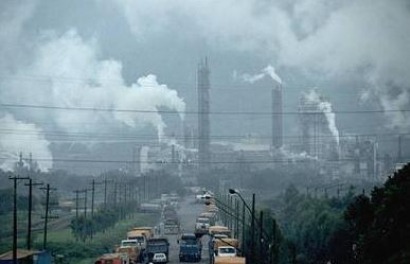
Assuming the rule survives the coming windstorm of legal and political attacks, renewable energy stands to benefit.
Fossil fuel-fired electric power plants are the largest source of carbon dioxide emissions in the United States, representing about one-third of total greenhouse gas emissions. Additionally, power plant pollutants such as sulfur dioxide, nitrogen oxides, particulates, and various toxic compounds are implicated in serious adverse health effects among the general population. Children and older adults are particularly susceptible to these pollutants, as are lower income and minority families living in industrialized areas where pollution levels are high.
The proposed EPA rule sets state-specific goals for reducing carbon dioxide from the power sector, giving the states broad flexibility to meet the goals by lowering overall carbon intensity. The basic formula for determining each state’s goal is to divide carbon dioxide emissions (pounds) from fossil fuel-fired power plants by the electricity generated (megawatt hours) from both fossil fuel plants and certain low- or zero-emitting power sources, including renewable energy and nuclear power plants. This approach takes into account energy-efficiency improvements in the power sector.
Renewable Energy May Benefit From the Rule
Renewable energy profits by the way state agencies choose to implement the rule. Options for the states include: (1) improving power plant energy efficiency, (2) relying more on natural gas, (3) increasing energy efficiency in homes and businesses, and (4) expanding wind, solar, and other low- or zero-emitting alternatives. The states can use any combination of these four building blocks to achieve their goals. Additionally, cross-border trading of emission credits between states can result in situations where one state could offset emissions from another state.
Although the proposed rule would provide incentives for greater use of existing renewable energy technology, it is not obvious that the rule would encourage much additional investment in research and development. Thus, while the rule may be easier to defend by emphasizing proven technology, it may not drive innovation in the way that renewable energy advocates would like.
The rule’s opponents are quick to argue that the costs imposed by the rule would depress the U.S. economy and drive up electricity bills for the average homeowner. However, EPA economists have demonstrated that when the rule is fully implemented, consumer bills would actually decrease by 8 percent due to increased energy efficiency and reduced growth in demand.
By 2030, when the rule is fully implemented, carbon dioxide emissions would be cut by 30 percent below 2005 levels, and the pollutants that contribute to soot and smog would be reduced by over 25 percent. As a result, 2,700 to 6,600 premature deaths would be avoided, as would 140,000 to 150,000 asthma attacks in children and 470,000 to 490,000 missed school days and workdays. The overall climate and health benefits by 2030 would amount to between $55 billion and $93 billion.
Support for the Rule Remains Strong
Although still a proposal, adversaries are already vilifying the rule as a job-killer and an assault on the American family. But many organizations are coming to EPA’s defense. For example, the American Lung Association has just released a TV ad in support of the rule. According to the Association, “Nearly half of all Americans, 147 million people, live in areas where the air is unhealthy to breathe due to ozone and particle pollution. Increased temperatures resulting from climate change are expected to make that worse.”
In defense of the rule, the U.S. EPA Administrator sums it up this way:
By leveraging cleaner energy sources and cutting energy waste, this plan will clean the air we breathe while helping slow climate change so that we can leave a safe and healthy future for our kids. And we don’t have to choose between a healthy economy and a healthy environment—our actions will sharpen America’s competitive edge, spur innovation, and create jobs.
Many coal-fired electric power plants are old and inefficient. In fact, the average plant in the United States is 42 years old, and 11 percent are over 60 years old! With over 3,000 units subject to the proposed rule, energy-efficiency improvements may yield significant emission reductions, but a heavier reliance on natural gas, nuclear, and renewable energy sources will also be important in achieving statewide goals. This will be the challenge for renewable energy proponents at the state level—to ensure renewable energy gains ground in this mix of energy sources.
Richard Crume works as an environmental engineer and teaches a university class on air pollution, climate change, and renewable energy. He lives in Chapel Hill, North Carolina U.S.A.

